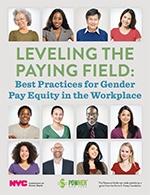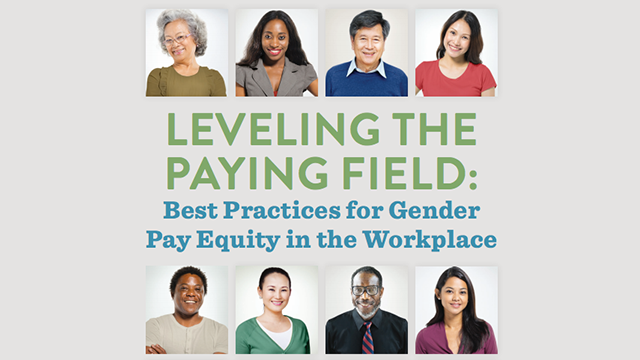 Leveling the Paying Field: Best Practices for Gender Pay Equity in the Workplace the latest report on equal pay, made in partnership with the New York City Commission on Gender Equity and PowHer New York.
Leveling the Paying Field: Best Practices for Gender Pay Equity in the Workplace the latest report on equal pay, made in partnership with the New York City Commission on Gender Equity and PowHer New York.
Read an excerpted letter from New York City’s First Lady, Chirlane McCray below:
“When Lily Ledbetter, the plaintiff in a landmark pay discrimination case, stood beside President Barack Obama in 2009 as he signed the Fair Pay Act bearing her name into law, I cheered. Finally, equal pay for equal work was the law of the land. But the long arc toward justice is not quite that simple. The struggle for civil rights didn’t end with the Civil Rights Act, and the LGBTQ rights movement didn’t stop at marriage equality. The work may shift and refocus to new fights and frontiers, but it always, always continues.
The same is true in the fight for pay equity. We still have a long way to go. On average, women in the United States still only make 79.6 cents on the dollar as compared to men. And it’s worse for women of color, both nationally and right here in New York City. Asian-American women in NYC earn 63 cents on the dollar. For African-American women, it’s 55 cents. Hispanic women earn just 46 cents on the dollar. In 2017, this is unacceptable. It always was. And it is up to all of us to carry on the fight, because equality is everyone’s responsibility.
Over the past few years, New York City has taken action. Just a few months after Bill and I arrived at City Hall, the City expanded paid sick leave for more than a million New Yorkers – including in many of the lowest-paid industries that employ a disproportionate amount of women. And as of October 2017, employers can no longer ask prospective hires about salary history – a much-dreaded question that forces women and minorities to carry their lower wages from job to job.
But the City can’t close the gender wage gap alone. Businesses and all other employers need to step up, and this resource guide will help them do it.
No more excuses. There are a lot of different factors that go into determining a person’s pay, but the evidence shows that key steps taken by employers can go a long way toward leveling the paying field. By addressing unconscious bias in hiring, doing more to accommodate pregnant women and new mothers, and expanding paid family leave, along with many other steps, employers can build a more equitable workplace for everyone. Plus, research shows that pay equity doesn’t just benefit women, it’s also good for business. This is a no-brainer.
Together, we can build a New York City that works for everyone, where equal work is valued as such and every workplace strives for equity.”


